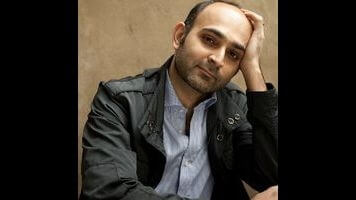Mohsin Hamid comes from the George Orwell school of essaying: There’s no sentence that can’t be made shorter, no thought that can’t be improved with fewer characters, no concept that couldn’t be better expressed with just a little bit less. While this may not surprise fans of his over-too-soon masterwork The Reluctant Fundamentalist or 2013’s nearly as concise How To Get Filthy Rich In Rising Asia, they could be forgiven for nonetheless expecting some of the upending of form and genre demonstrated in his fiction. Instead, Hamid’s non-fiction sticks stubbornly to the point; he’s relentlessly on message, like a political stump speech, and it ends up taking away from his greatest strength: his eloquent inventiveness.
Discontent And Its Civilizations, Hamid’s new collection of non-fiction essays, gathers writings from the past 15 years of the author’s life, and tries to give some order and shape to their breadth. Structurally, the book does this by breaking the essays into three categories: “life,” “art,” and “politics.” Each section then offers a smorgasbord of compositions, most pieces barely hitting four pages long. Hamid’s addiction to brevity is both an asset and a curse. Some essays, meant to evoke a single emotion or feeling, or to capture a complex attitude with a neat turn of phrase, are the perfect length, keeping the reader engaged and turning the pages. Others, especially those in the early “life” section, can feel reductive and prosaic, as though he’s not letting himself say enough. As a memoirist, Hamid is a great writer of novels.
But the book, and Hamid’s pen, come alive in the book’s best (and shortest, naturally) section, that of “art.” As he stresses in his introduction, these three categories are not separate for him: “The personal is political and vice versa, and my own art partakes strongly of both.” It’s understandable, then, that the section in which he allows the three to overlap most is also far and away the richest. These essays are vivid, full of sumptuous aphorisms on the role art can play in life. Consider this sharp accounting of individual identity: “I think this protagonist, this self, often recognizes that it is a fictional construct, but it also recognizes that thinking of itself as such might cause it to disintegrate.” Or in describing the new golden age of television as an impetus for the evolution of the novel: “Television is not the new novel. Television is the old novel.” Like the psychoanalyst whose most famous title he inverts, Hamid isn’t telling you anything you probably didn’t already know, but he’s making it mean something again.
The third section, “politics,” is undeniably a useful corrective to the mainstream American understanding of Pakistan, and Western misconceptions about the Middle East more broadly. It contains some inspired narratives about life in a country that most Americans only dimly understand, and illuminates the problem of the “clash of civilizations” mindset that informs so many of the misguided politics that affect the region. But Hamid’s prose, while nobly intentioned, often falls into truisms. For every succinctly worded commentary on the “useful illusion” of civilizations as a “politically convenient myth,” there are homilies to the idea of a “post-national collective humanity,” which sounds nice, but Hamid does not offer much in the way of new insights. A crackerjack centerpiece, “What They Get Wrong About Pakistan,” is a highlight, but also points out the weaker nature of some of the surrounding materials.
Luckily, the fleet structure of the book and its contents is the saving grace of the more slack sections. Don’t care for one of the articles? Turn the page; a new one is about to start. And while Hamid’s efforts to separate the three categories—to give shape and structure to the parts of life that he acknowledges are inescapably messy and overlapping—are well intentioned, they harm his ultimate goal. The author’s best essays—like his fiction—shine by demolishing the boundaries. They emerge when he lets his three categories bleed together; when his art, as he says, is partaking strongly of both.

